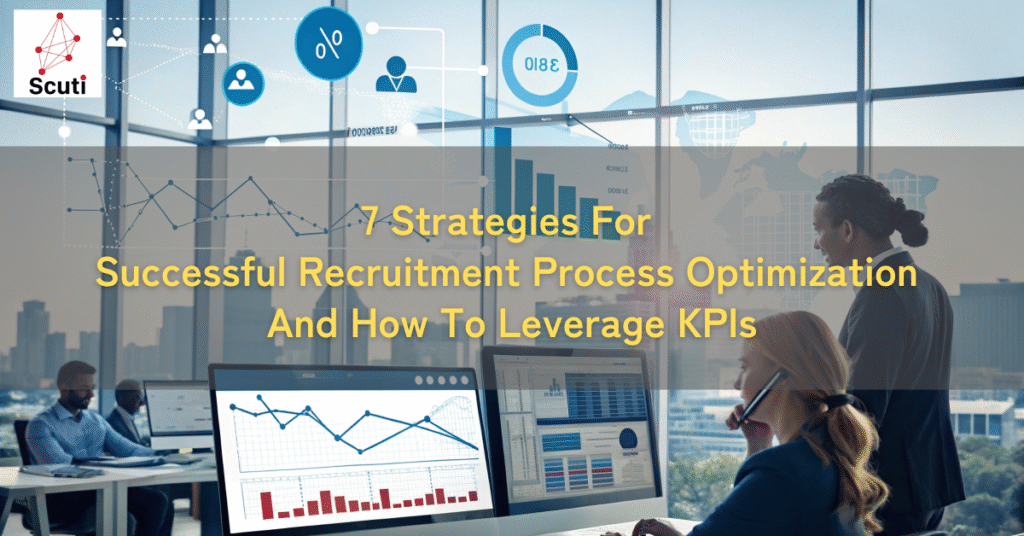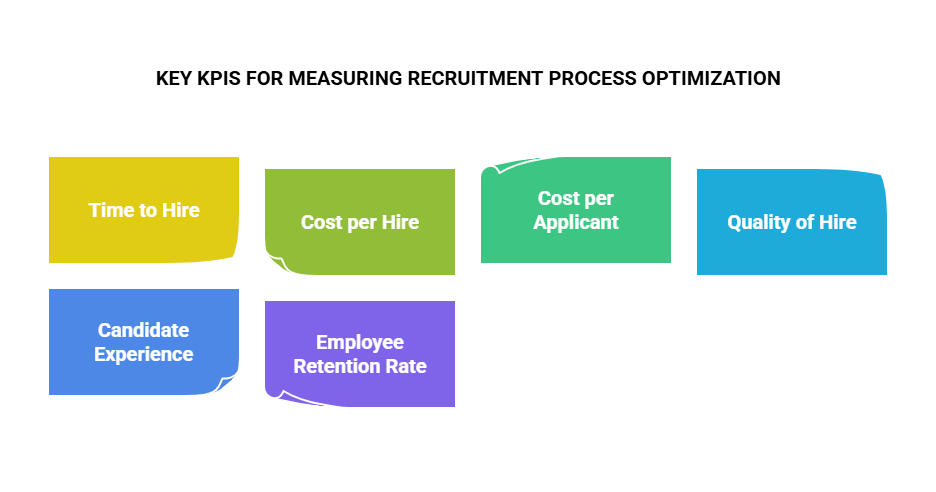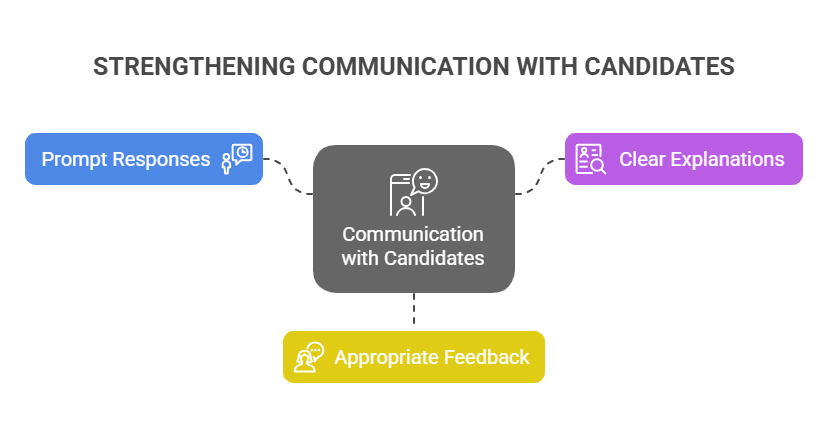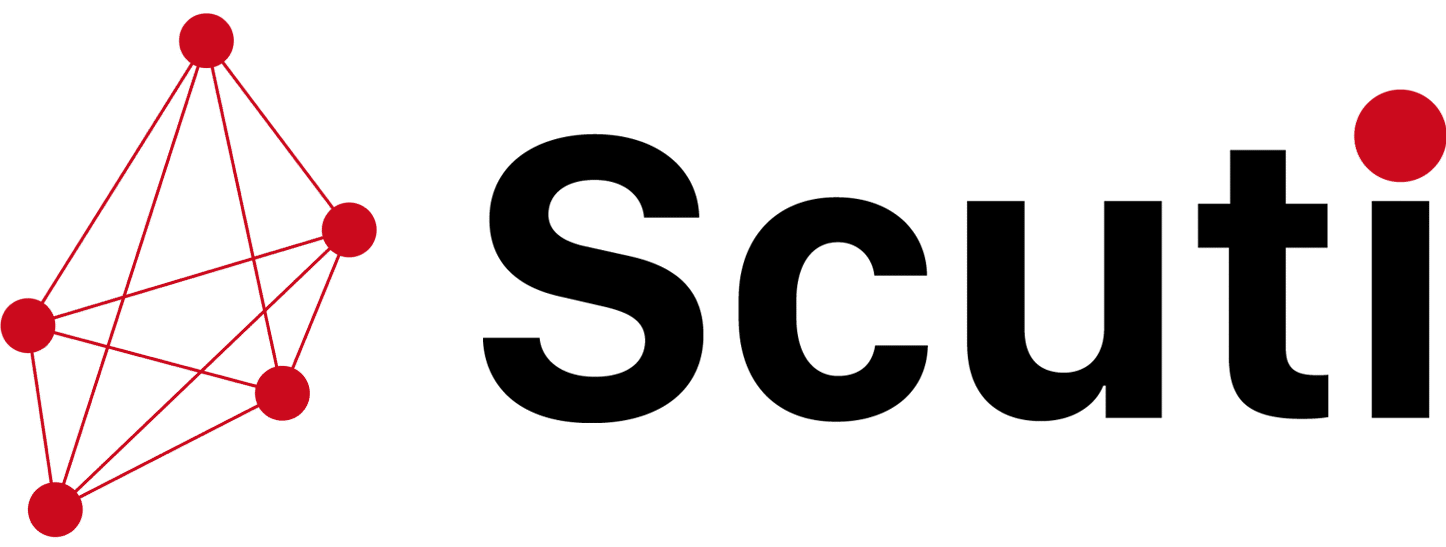

Hello, I am Kakeya, the representative of Scuti.
Our company specializes in services such as Offshore Development And Lab-type Development in Vietnam, as well as Generative AI Consulting. Recently, we have been fortunate to receive numerous requests for system development in collaboration with generative AI.
To those working on recruitment process optimization. Finding top talent requires time and effort, but by streamlining the process, you can not only reduce costs but also quickly hire high-quality candidates. Optimizing the recruitment process is a key element in supporting the growth of your business.
This article provides a detailed explanation of 7 effective strategies for recruitment process optimization, key KPIs, and tools that should be utilized. By implementing these methods, you will be able to conduct your recruitment activities more efficiently and effectively.
Basic Knowledge of Recruitment Process Optimization

If you want to learn more about Generative AI, be sure to check out this article first.
Related article: Comprehensive Guide To Implementing Generative AI: From Basic Knowledge To Practical Applications And Future Prospects
What is Recruitment Process Optimization?
Recruitment process optimization refers to the improvement of processes aimed at attracting, screening, and onboarding high-quality candidates with limited time and resources. Specifically, it involves optimizing the entire recruitment activity and eliminating waste, with the goal of acquiring talent more effectively.
This optimization allows recruiters to focus on crucial tasks and enables the rapid acquisition of necessary talent for the company.
Why Recruitment Process Optimization is Important
Recruitment process optimization brings many benefits to a company. The main reasons are as follows:
-
Time and Cost Reduction: An efficient recruitment process minimizes the time spent on applicant screening, scheduling interviews, and other administrative tasks. By utilizing tools like Applicant Tracking Systems (ATS), recruitment teams can focus on candidate engagement and overall recruitment efficiency. This allows recruiters to allocate more time to strategic tasks and contributes to the overall productivity improvement of the company. Furthermore, an optimized process enables faster recruitment, which helps secure a competitive edge in a highly competitive market.
-
Improved Recruitment Quality: An efficient process leads to better hiring decisions. By tracking recruitment metrics and focusing on key areas like candidate communication and resume screening, companies can hire talent that matches the required technical skills and fits with the corporate culture. This leads to improved post-hire performance and supports long-term organizational growth. High-quality hiring increases employee retention rates and strengthens organizational stability.
-
Strengthened Employer Brand: A seamless recruitment strategy leaves a positive impression on job seekers. Candidates who experience a smooth application process are more likely to view your organization as a professional and attractive workplace, strengthening the employer brand. This makes it easier to attract top talent in future recruitment efforts. A strong employer brand enhances the company’s competitiveness and improves its position within the industry.

Key KPIs for Measuring Recruitment Process Optimization

Time to Hire
Definition: Time to hire refers to the period from the start of the job posting until the candidate accepts the job offer.
Importance: Shortening the time to hire allows new talent to start contributing quickly, accelerating the company’s growth. It also reduces the risk of losing top candidates.
Measurement Method: By utilizing an Applicant Tracking System (ATS), record data such as the job posting date, application date, interview date, and offer acceptance date, and calculate the duration for each stage.
Cost per Hire
Definition: Cost per hire refers to the total cost incurred to hire one candidate.
Importance: Understanding the cost per hire helps visualize the costs involved in recruitment and consider more cost-effective hiring methods.
Calculation Method: Add up all costs associated with the recruitment process, such as job advertising fees, recruitment agency fees, recruiter salaries, interview expenses, and recruitment management system usage fees, and then divide by the number of hires.
Cost per Applicant
Definition: Cost per applicant refers to the cost incurred for each applicant.
Importance: By understanding the cost per applicant, you can analyze the cost-effectiveness of your recruitment activities in greater detail.
Calculation Method: Add up all costs associated with the recruitment process, such as job advertising fees, recruitment agency fees, and recruiter salaries, and then divide by the number of applicants.
Quality of Hire
Definition: Quality of hire is a metric used to evaluate how well the hired talent is performing.
Importance: Measuring the quality of hire allows you to assess the effectiveness of your recruitment activities and make improvements.
Measurement Method: Evaluate the performance of hires based on performance review results, goal achievement rates, evaluations from managers, and feedback from colleagues.
Candidate Experience
Definition: Candidate experience is a metric that evaluates how satisfied applicants are with the entire recruitment process.
Importance: The higher the candidate experience score, the better the company’s brand image, and the easier it becomes to attract top talent.
Measurement Method: Measure candidate satisfaction by conducting surveys or collecting feedback after interviews.
Employee Retention Rate
Definition: Employee retention rate refers to the percentage of employees who remain with the company over a certain period.
Importance: A high employee retention rate helps reduce recruitment costs and maintain organizational stability.
Calculation Method: Subtract the number of employees who left during the period from the number of employees at the start of the period, and then divide by the number of employees at the start of the period.

7 Strategies for Achieving Recruitment Process Optimization

1. Implementing an Applicant Tracking System (ATS)
An Applicant Tracking System (ATS) is an essential tool for streamlining the entire recruitment process. It provides various features such as managing applicants, tracking the selection process, and automating communication, which reduces the burden on recruiters and speeds up the recruitment process.
This allows recruiters to dedicate more time to strategic tasks and contributes to the overall productivity of the company.
2. Creating Attractive Job Listings
Attractive job listings are crucial for attracting more applicants. Effectively conveying the company’s appeal, the attractiveness of the job, and the benefits will capture the attention of candidates.
-
Specific Job Responsibilities: By avoiding vague expressions and clearly describing the specific duties, responsibilities, and expected outcomes, candidates can more easily determine if they are suitable for the role.
-
Company Culture and Values: Creating job listings that reflect the company’s culture and values will attract candidates who resonate with them and enhance their sense of belonging to the company.
-
Growth Opportunities: Highlighting initiatives that support employee growth, such as training systems and career paths, will show that your company is an attractive workplace for highly motivated candidates.
3. Implementing Effective Sourcing Strategies
To acquire the right talent, effective sourcing strategies are essential. By combining various channels such as job postings, recruitment agencies, and direct recruiting, a broader range of candidates can be found.
-
Job Postings: Job advertisements are an effective way to approach many candidates. However, it is important to properly set the media and target audience for the postings.
-
Recruitment Agencies: Recruitment agencies help efficiently advance the hiring process by introducing specialized and experienced candidates.
-
Direct Recruiting: Direct recruiting is when companies approach candidates directly. By utilizing social media like LinkedIn or the company’s website, companies can find and approach candidates directly.
4. Streamlining the Interview Process
The interview process is one of the most time- and labor-intensive parts of recruitment. By training interviewers, clarifying evaluation criteria, and improving interview methods, the interview process can be streamlined.
-
Interviewer Training: Interviewers need to develop skills to appropriately assess candidates. Sharing the purpose of interviews, how to ask questions, and evaluation criteria through training improves the quality of interviews.
-
Clarification of Evaluation Criteria: If interviewers have different evaluation standards, it can be difficult to conduct fair assessments. By clarifying and sharing evaluation criteria in advance, objective evaluations become possible.
-
Improving Interview Methods: By enhancing the interview methods, more information can be gathered and candidates’ abilities can be assessed more accurately. For example, group interviews, case studies, and presentations can be used to evaluate candidates’ communication and problem-solving skills.
5. Strengthening Communication with Candidates
Communication with candidates is crucial throughout the recruitment process. By providing prompt responses, clear explanations, and appropriate feedback, companies can improve their image and attract top talent.
-
Prompt Responses: Respond to applicants’ inquiries as quickly as possible. Delayed responses can harm the company’s image.
-
Clear Explanations: Clearly explain the recruitment process and job duties to applicants. By resolving any uncertainties or concerns, applicants will feel more comfortable.
-
Appropriate Feedback: After interviews, provide constructive feedback to applicants. Sharing not only the selection results but also areas for improvement helps support the applicants’ growth.

6. Building an Employer Brand
An employer brand is the image a company has among job seekers. By building an attractive employer brand, more top talent can be attracted.
-
Communicating the Company’s Philosophy and Vision: Clearly communicating the company’s philosophy and vision attracts candidates who resonate with them.
-
Sharing Employee Voices: Sharing employees’ voices allows companies to convey their culture and working environment more concretely.
-
Ensuring Transparency in Recruitment: By making the recruitment process and evaluation criteria transparent, companies can gain trust from applicants.
7. Continuous Improvement through Data Analysis
Analyzing recruitment data can uncover issues and areas for improvement, leading to more effective recruitment efforts.
-
Analyzing Recruitment Metrics: Analyzing metrics such as time to hire, cost per hire, cost per applicant, post-hire performance, and candidate satisfaction helps evaluate the efficiency and effectiveness of recruitment activities.
-
Analyzing Applicant Data: By analyzing applicant attributes, skills, and experience, recruitment activities can be tailored to the target audience.
-
Analyzing Interview Data: Analyzing interviewers’ evaluations, questions asked, and candidates’ responses helps improve the interview process.
Recommended Tools to Support Recruitment Process Optimization

1. Applicant Tracking System (ATS)
Features: Management of applicants, tracking of selection status, automation of communication, etc.
Benefits: Streamlining the entire recruitment process, reducing the burden on recruiters, visualizing recruitment data.
2. Video Interview Tools
Features: Conducting interviews online.
Benefits: Reducing time and costs, eliminating geographical limitations, improving convenience for candidates.
3. Social Recruiting Tools
Features: Recruiting talent using social media.
Benefits: Expanding reach to target audiences, enhancing employer brand, strengthening engagement with candidates.
4. AI-powered Tools
Features: Automated resume screening, candidate matching, automation of interviews, etc.
Benefits: Streamlining the entire recruitment process, improving the quality of hires, reducing recruitment costs.
Conlusion

Recruitment process optimization is an essential effort to accelerate business growth. By setting appropriate KPIs and continuously tracking them, you can identify the issues and areas for improvement in your recruitment activities, allowing you to implement more effective strategies. Additionally, utilizing tools such as an Applicant Tracking System (ATS) helps streamline the entire recruitment process and reduces the burden on recruiters.
